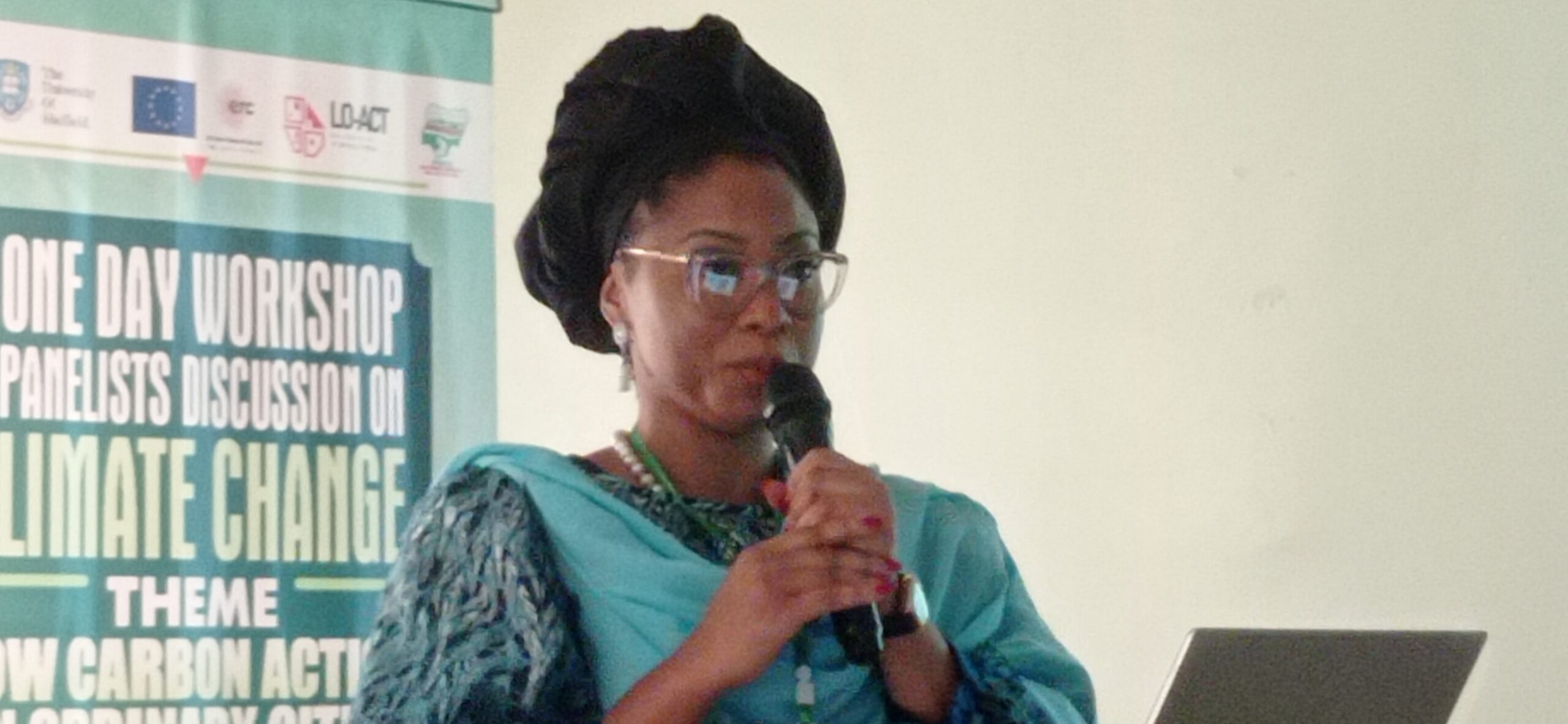Anthropogenic emissions, serious threat to climate change — Don
Anthropogenic emissions, serious threat to climate change — Don Tribune Online


Climate Change Poses Serious Threat to Sustainable Development Goals (SDGs)

Introduction
Dr Modesta Alozie of the University of Sheffield, UK, presented findings from the 6th Assessment Report of the Intergovernmental Panel on Climate Change during a workshop held in Bauchi. The report states that global average temperatures have increased by 1.1 Degree Celsius since the 19th Century due to anthropogenic emissions. This development poses a serious threat to climate change and the achievement of the Sustainable Development Goals (SDGs).
Impact of Climate Change
- Water shortages affect 3 billion people annually.
- 1 in 3 people are exposed to deadly heat stress.
- At least half a million people are exposed to regular flooding.
- Changing climate conditions exacerbate pandemics such as dengue fever.
- Ecosystem transformations and drought may cause famines.
The Need for Action
Dr Modesta Alozie emphasized the urgency for action to address climate change. She stated, “Our world is changing and we need to change with it. We need to stop the anthropogenic emissions that cause climate change.”
Urbanization and Climate Change
Dr Alozie highlighted the impact of urbanization on climate change. She explained that urbanization exacerbates the impacts of climate change, increases inequality, and reduces vulnerability, especially for the most vulnerable groups.
Barriers to Urban Climate Action
- Urbanization adds to the impacts of climate change.
- Urbanization increases inequality.
- Urbanization reduces vulnerability, especially for the most vulnerable groups.
The Role of Low Carbon Action in Ordinary Cities (LOACT)
The purpose of LOACT is to understand urban climate action and urban innovation in the context of rapid urbanization. Dr Alozie believes that community members themselves can play a crucial role in mitigating the negative impacts of climate change.
Conclusion
Dr Modesta Alozie expressed confidence that the resolutions from the workshop will pave the way for addressing climate change issues in Bauchi, a fast-growing urban center. It is essential to prioritize climate action and innovation to achieve the SDGs and create a sustainable future.
READ ALSO FROM NIGERIAN TRIBUNE
SDGs, Targets, and Indicators
| SDGs | Targets | Indicators |
|---|---|---|
| SDG 13: Climate Action | Target 13.1: Strengthen resilience and adaptive capacity to climate-related hazards and natural disasters | Indicator not mentioned in the article |
| Target 13.2: Integrate climate change measures into national policies, strategies, and planning | Indicator not mentioned in the article | |
| Target 13.3: Improve education, awareness-raising, and human and institutional capacity on climate change mitigation, adaptation, impact reduction, and early warning | Indicator not mentioned in the article | |
| Target 13.a: Implement the commitment undertaken by developed-country parties to the United Nations Framework Convention on Climate Change to a goal of mobilizing jointly $100 billion annually by 2020 from all sources to address the needs of developing countries in the context of meaningful mitigation actions and transparency on implementation and fully operationalize the Green Climate Fund through its capitalization as soon as possible | Indicator not mentioned in the article | |
| Target 13.b: Promote mechanisms for raising capacity for effective climate change-related planning and management in least developed countries and small island developing States, including focusing on women, youth, and local and marginalized communities | Indicator not mentioned in the article | |
| SDG 6: Clean Water and Sanitation | Target 6.4: By 2030, substantially increase water-use efficiency across all sectors and ensure sustainable withdrawals and supply of freshwater to address water scarcity and substantially reduce the number of people suffering from water scarcity | Indicator mentioned: 3 billion people suffer water shortages every year |
| SDG 11: Sustainable Cities and Communities | Target 11.2: By 2030, provide access to safe, affordable, accessible, and sustainable transport systems for all, improving road safety, notably by expanding public transport, with special attention to the needs of those in vulnerable situations, women, children, persons with disabilities, and older persons | Indicator not mentioned in the article |
| Target 11.3: By 2030, enhance inclusive and sustainable urbanization and capacity for participatory, integrated, and sustainable human settlement planning and management in all countries | Indicator mentioned: Urbanization adds to the impacts of climate change, increases inequality, and reduces vulnerability | |
| Target 11.a: Support positive economic, social, and environmental links between urban, peri-urban, and rural areas by strengthening national and regional development planning | Indicator not mentioned in the article |
Analysis
1. Which SDGs are addressed or connected to the issues highlighted in the article?
The SDGs addressed or connected to the issues highlighted in the article are SDG 13: Climate Action, SDG 6: Clean Water and Sanitation, and SDG 11: Sustainable Cities and Communities.
2. What specific targets under those SDGs can be identified based on the article’s content?
Based on the article’s content, the specific targets under the identified SDGs are:
– Target 13.1: Strengthen resilience and adaptive capacity to climate-related hazards and natural disasters
– Target 13.2: Integrate climate change measures into national policies, strategies, and planning
– Target 13.3: Improve education, awareness-raising, and human and institutional capacity on climate change mitigation, adaptation, impact reduction, and early warning
– Target 13.a: Implement the commitment undertaken by developed-country parties to the United Nations Framework Convention on Climate Change to a goal of mobilizing jointly $100 billion annually by 2020 from all sources to address the needs of developing countries in the context of meaningful mitigation actions and transparency on implementation and fully operationalize the Green Climate Fund through its capitalization as soon as possible
– Target 13.b: Promote mechanisms for raising capacity for effective climate change-related planning and management in least developed countries and small island developing States, including focusing on women, youth, and local and marginalized communities
– Target 6.4: By 2030, substantially increase water-use efficiency across all sectors and ensure sustainable withdrawals and supply of freshwater to address water scarcity and substantially reduce the number of people suffering from water scarcity
– Target 11.2: By 2030, provide access to safe, affordable, accessible, and sustainable transport systems for all, improving road safety, notably by expanding public transport, with special attention to the needs of those in vulnerable situations, women, children, persons with disabilities, and older persons
– Target 11.3: By 2030, enhance inclusive and sustainable urbanization and capacity for participatory, integrated, and sustainable human settlement planning and management in all countries
– Target 11.a: Support positive economic, social, and environmental links between urban, peri-urban, and rural areas by strengthening national and regional development planning
3. Are there any indicators mentioned or implied in the article that can be used to measure progress towards the identified targets?
The article mentions one indicator that can be used to measure progress towards the identified targets:
– Indicator: 3 billion people suffer water shortages every year (Target 6.4: SDG 6: Clean Water and Sanitation)
– Indicator: Urbanization adds to the impacts of climate change, increases inequality, and reduces vulnerability (Target 11.3: SDG 11: Sustainable Cities and Communities)
The article does not mention any indicators for the other targets.
4. Table: SDGs, Targets, and Indicators
| SDGs | Targets | Indicators |
|---|---|---|
| SDG 13: Climate Action | Target 13.1: Strengthen resilience and adaptive capacity to climate-related hazards and natural disasters | Indicator not mentioned in the article |








